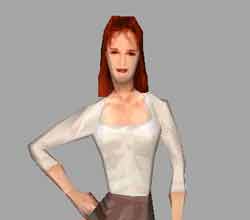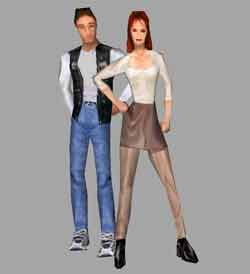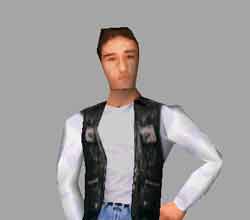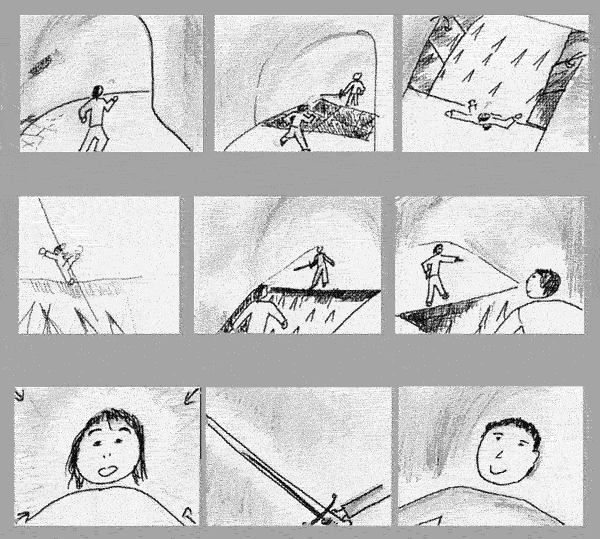





The development process was very much a mixture of film and game practice. While some game designs heavily focus on graphical appearance, and the general look of the title, Common Tales started with a cinematic approach - that means from a development of the main conflict, characters, story line, and camera work.



Every important scene was storyboarded beforehand and although adjustments had to be made during the production the pre-defined camera work was implemented as thouroughly as possible. Almost all the final scenes were running in the 3D real-time engine with only one small scene as a pre-rendered element.
One remarkable advantage of the real-time representation was the ability to tweak and adjust the camera when needed and get immediate results instead of having to wait for a long lasting rendering process to finish.

Instead of hand-coding every single element a meta-language was developed for the project. This scripting language connected the original Playstation code (in C) with the design of Common Tales. It allowed a staging of various scenes, including animations, camera movements and cuts, sounds, texts, and effects.
{
//SEWER TRAP SCRIPT
DIRECTOR_DO_OVERRIDE_CONTROLS(TRUE),
DIRECTOR_DO_SET_NPC_LOGIC(TOM,vThomasWavesHisSword),
DIRECTOR_DO_CAMERA_CU_ON_FACE(1300,-600,0), //WORMVIEW
DIRECTOR_DO_HERO_GAZE_DIRECTION(FIZ,-600,0),
DIRECTOR_DO_WAIT(20,0),
DIRECTOR_DO_SAY(T_CAREFUL),
DIRECTOR_DO_LOOKAT_OTHER_HERO(TOM),
DIRECTOR_DO_WAIT(40,0),
DIRECTOR_DO_HERO_GAZE_DIRECTION(FIZ,400,0),
DIRECTOR_DO_OVERRIDE_CONTROLS(FALSE),
DIRECTOR_DO_GROUP_CAM(186,galFixedCamEntList), //MASTER
DIRECTOR_DO_SAY(F_WAIT),
...
Excerpt from the in-game script defining the storyboarded scene above using the scripting language